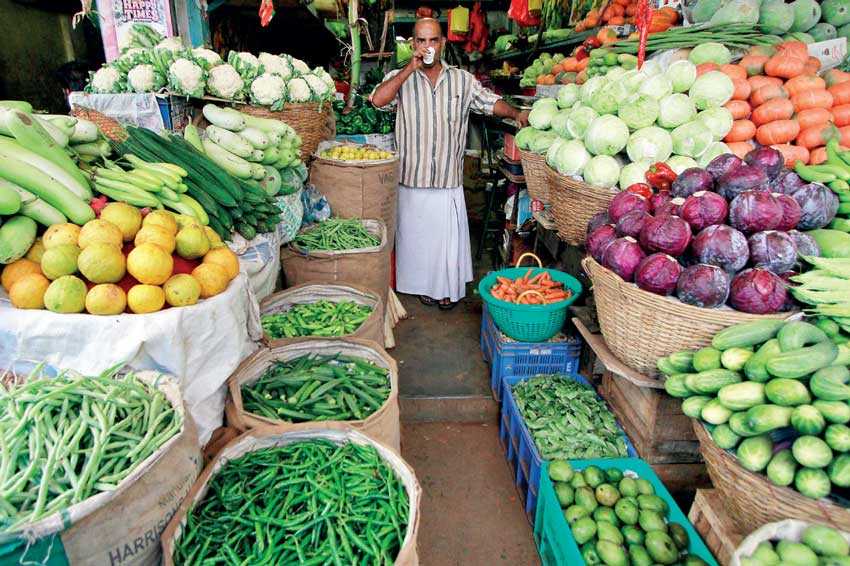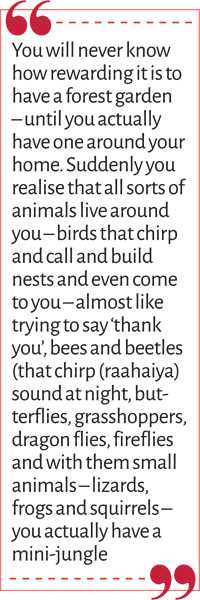Friday Jan 31, 2025
Friday Jan 31, 2025
Saturday, 20 February 2021 00:10 - - {{hitsCtrl.values.hits}}

To most people vegetables means carrots, cabbages, beets, leeks – all introduced by the colonials. What about what we ate before these were introduced? – Pic by Shehan Gunasekara
By Ranjit Seneviratne
This article is based on a pandemic backdrop series of writings, awareness programs and discussions promoted by the Daily FT Harmony page on the link between healing the soil and healing of humans. The Harmony page will also be shortly announcing the practice based actions we will be introducing along with several stakeholders, to encourage general awareness on enriching the soil, conservation of rainwater and conservation of indigenous seed varieties as well as promoting the foresting concept for ‘free food cultivation’ in public spaces.
This article is a continuation from the one carried in the Harmony page last week: http://www.ft.lk/harmony_page/Growing-your-own-food-is-like-printing-your-own-money/10523-713116.
 Initial planting of seeds, seedlings
Initial planting of seeds, seedlings
After about a week or 10 days, seeds/seedlings can be planted by separating the mulch. Wood ash may be spread round the plants to protect them from snail and insect attack. If you have too many snails/slugs and no snail-eating Coucal (Eti Kukula) to control them, bury small containers of beer in the soil.
Planting of fruit and berry trees
If the garden is small it would be necessary to plant grafted fruit and berry trees, such as star fruit, nam nam (cynometra cauliflora), ambarella/june plum (dwarf type), jak, citrus trees (pomello, grape fruit, lemons, limes), rose apple (jambu), lovi-lovi, Java plum (madhang) as well as banana and papaya (avoid seedless and genetically modified [GMO] varieties, as research shows they interfere with natural body processes (even birds do not eat them)).
Planting of vines along the boundary walls by erecting ‘wire-netting’ as a climbing frame
If you have bare walls, erect an inner ‘fence’ of wire-netting as a climbing frame for vines, such as passion fruit, green and red spinach, kiri aguna, kuringnang herb, elephant foot yam (engili ala), purple yam (rathu/raja ala) – these not only produce large yams below ground, but also potato-like ala on the vine (like fruits) and these can be cooked like potatoes or eaten raw.
Planting of increasingly rare medicinal herbs and beneficial insect attracting local plants
To most people vegetables means carrots, cabbages, beets, leeks – all introduced by the colonials. What about what we ate before these were introduced? Today they are called ‘medicinal herbs’ such as Gendha (Portulaca high in vitamin E – grows by the roadside even today), ‘weeds’ such as Kuppamenia (Acalypha indica – an expectorant to treat asthma and pneumonia) and for skin problems), Polpala (Aerva lanata – dissolves bladder and kidney stones), Mukunuwenna (Sessile joyweed – cures piles, jaundice, infertility, prevents cancer), Thampala, (Amaranth – Ayurvedic usage – treatment for eczema, piles, gonorrhoea), Gotukola (Centella asiatica – for heart and stress problems, brain health, Sarana (Horse Purslane – asthma, diabetes), Maduruthala (Holy Basil strengthens immunity against viruses), Nidhikumba root (stomach worms, dysentery), Lunuwila (Bacopa – strengthens brain function) and other common weed type plants – Gus Nivithi, Ambul Ambili, Monara Kudumbi and a whole lot more.
Maintenance
New applications of wood chips are only required to keep the layers preferably a minimum of 4 inches deep, because the lowest layer of wood chip mulch becomes compost/top-soil. The protective top layers dry out in the sun, but absorbs water at night, thus keeping the compost/top soil moist. The ‘healing the soil’ process of building a layer of top soil takes time, about 10 months for a layer of about 3 inches in sandy soil and longer in soil that is hard and mixed with clay..
The roots of the plants spread widely in this layer of top soil, because it is so soft and also allows the roots to collect moisture from a wider area and yams to grow huge. The top soil thus gradually increases in depth so that plants become more and more luxuriant and productive over time. When plants are so full of moisture they are optimally healthy and therefore more resistant to pests. Growing a mix of plants (as in a forest) especially with insect-repelling plants like Holy Basil, Neem (Kohomba) and plants with strong scented leaves also discourages insect pests. Note ‘yellowing’ of leaves indicate a lack of Magnesium and Dolomite or ‘Magsulph’ may be needed.
Weeds do not take root because of the dry wood chip covering. Any weeds that do grow are easily pulled out – root and all because, the top soil is so soft and moist.
Flooding by heavy rain would also be much reduced, because the layer of top soil (depending on the thickness) is very absorbent and any excess water quickly vanishes into the soil.
Rewards of having a forest garden around your home
You will never know how rewarding it is to have a forest garden – until you actually have one around your home. Suddenly you realise that all sorts of animals live around you – birds that chirp and call and build nests and even come to you – almost like trying to say ‘thank you’, bees and beetles (that chirp (raahaiya) sound at night, butterflies, grasshoppers, dragon flies, fireflies and with them small animals – lizards, frogs and squirrels – you actually have a mini-jungle.
Another realisation is that there is communication going on within nature. Scientists have found that trees communicate using fungi that form networks of fungal ‘theads’ around plant roots. They have been found to share nutrients with smaller plants and those receiving less sunlight. They even produce chemicals that fight insects and send warnings to neighbouring trees.
Trees talk
Believe it or not I have a ‘Kathakarana palaya’ or ‘Talking Plant’. Well, it responds to human voices by bending its mini-leaves first and then the larger ones – almost like ‘nodding’ in ageement and saying ‘I hear you’.
Animals too must have some sort of communication system, because they all ran away from the sea long before the Tsunami hit the beaches. So obviously, humans have got disconnected from this natural knowledge system, because we started using our brains to control and ‘improve’ nature and natural systems. So while we are trying to have the ‘Internet of Things’ using nature-destroying 5G radiation, nature already has this ‘Internet of Beings’ they use to protect each other.
Living close to nature like this makes you sort of sense this ‘Internet of Beings’, because you find birds that come to you when you come out into the garden and butterflies that sit on your shirt and fish that gather on the surface just when you arrive at the pond. The effect on me of this kind of awareness is one of calm and peace; feelings of loving kindness that I think is part of hutman nature that we lose – when we live apart from Nature.
This in fact led me to set a ‘Community Garden’ right at the entrance of my house in the heart of Kollupitiya, to share the bounty of plants and vegetables with anyone who passes by – free, just for the picking.
A very good practical demonstration of ‘Regenerative Farming’ is available in Sinhala and Tamil. We are planning for it to be used as a tool to train farmers, plantation personnel, agriculture extension officers, etc., to raise awareness of the importance of healing the soil (as a means of reducing the impact of climate change) in schools, universities, temples, kovils, churches and mosques where they could also be encouraged to grow ‘community gardens’ to encourage the concept of ‘sharing and caring’.
It is suggested that research would also need to be done by the Rice Research Institute, Tea Research Institute and other research institutes on how to adapt these techniques to paddy cultivation, tea cultivation, and vegetable cultivation. This could lead to a completely chemical-free Sri Lanka, with reduced need for foreign exchange, but much healthier food.
Summary
1) Make sure all rain water remains in the garden by suitable landscaping if required.
2) Have ponds as water ‘features’ to attract flora and for cooling
3) Collect necessary inputs for healing the soil – bio char, compost, wood chip mulch from large trees
4) Use cover crops as an initial preparation
5) Setting up the garden – cover with paper, then compost mix and wood chip mulch
6) Initial planting of seeds, seedlings
7) Planting of fruit and berry trees
8) Planting of vines along the boundary walls by erecting ‘wire-netting’ as a climbing frame
9) Maintenance